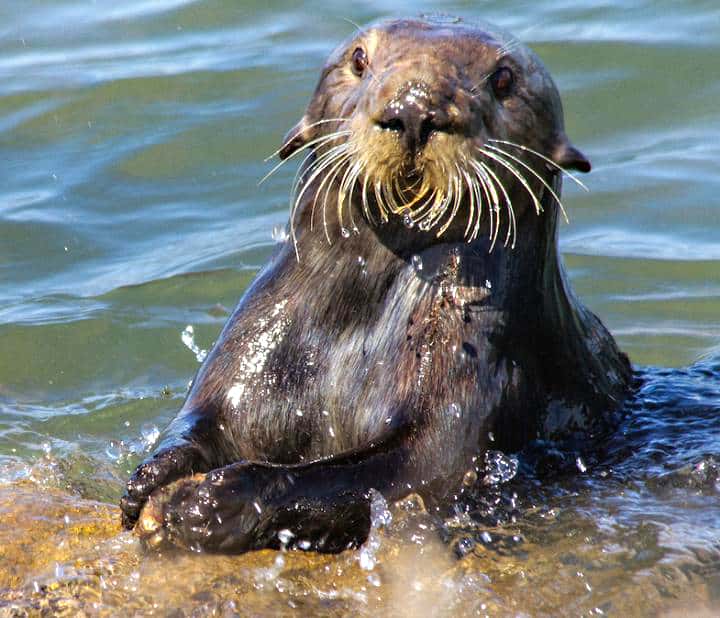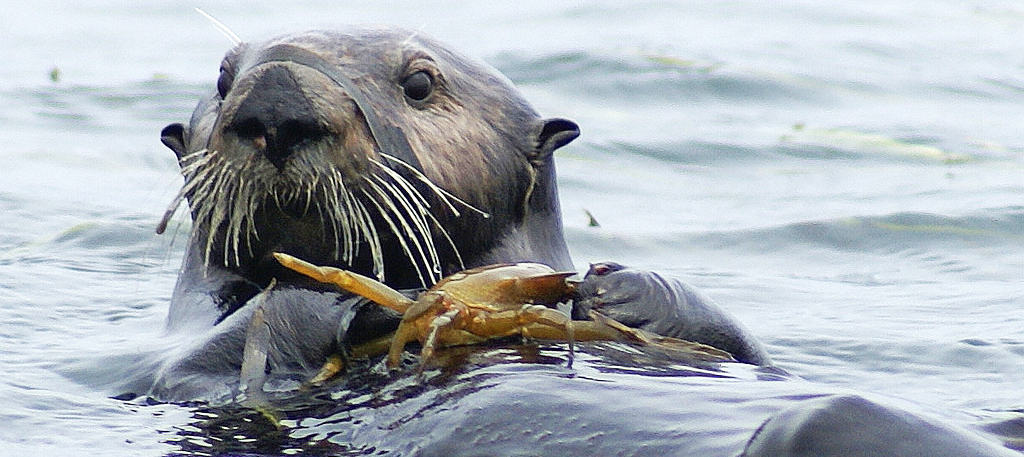Share this article
Tracking sea otter tool use to inform conservation
Sea otter (Enhydra lutris) biologists have combined forces with archaeologists to develop new ways to track past activity of the marine mammals.
The collaboration could help inform conservationists and biologist alike on the development of sea otter tools and techniques and identify areas that may be important for conservation as the marine mammals’ populations continue to recover, said Natalie Uomini, a senior scientist who studies the evolution of intelligence and tool use in humans and animals at the Max Planck Institute in Jena, Germany.
“Sea otters are a threatened species and they have gone extinct in parts of their former range,” Uomini said.

Uomini is one of the co-authors of a study recently published in Scientific Reports describing how the animals leave archaeological traces due to a particular strategy some individuals use for opening up mussels.
Chimpanzees and other primates are well-known for their ability to exploit resources using tools like sticks or rocks. But sea otters also have several different ways of using tools to help them snack on shellfish. Some balance flat rocks from the seabed on their stomachs while floating on their back, either smashing open shellfish on top of the rocks or using a second, smaller stone to smash open the bivalve balanced on the larger rock. Others smash mussels open against large boulders, often using the same stones again and again.
“Sea otters have this really interesting diet specialization,” Uomini said, adding that only certain individuals in every group will show these types of behavior.
Biologists in California spent a decade observing sea otters smashing mussels at the Bennett Slough Culverts site in California.
“It’s a really convenient post because the food is right there, and the rocks are right there,” Uomini said.
The biologists then connected with archaeologists like Uomini, who discovered that this behavior leaves a distinctive trace behind. They found that persistent smashing would actually damage the natural surface of the rocks.
“It’s quite clear that the damage is on the side facing on the water and on the tops of the rocks, particularly,” Uomini said.
They also found the sea otters seemed to prefer certain rocks as anvils, discarding the empty shells into piles called middens by archaeologists, who can date the deposits using radiocarbon analysis.
“The mussel middens just build up, and they are very impressive — they’re huge,” Uomini said.
The combination of stone damage and shell middens could be used to find areas previously occupied by sea otters, which used to inhabit the Pacific Coast from Baja California to Japan but now only exist in a fraction of their former territory.
Working together, Uomini said, biologists and archaeologists could use these signs of former sea otter activity and determine dates from the shell middens to better understand prime habitat for the marine mammals, which have been around for roughly 2 million years. This could help inform ongoing reintroductions of the species, she said.
Researchers could also perhaps trace the age of the behavior itself, which is important as conservationists are starting to gain an appreciation for conserving cultural diversity among species, instead of just genetics.
Header Image: Understanding where sea otters once existed could help guide conservation efforts. ©Ron Eby








